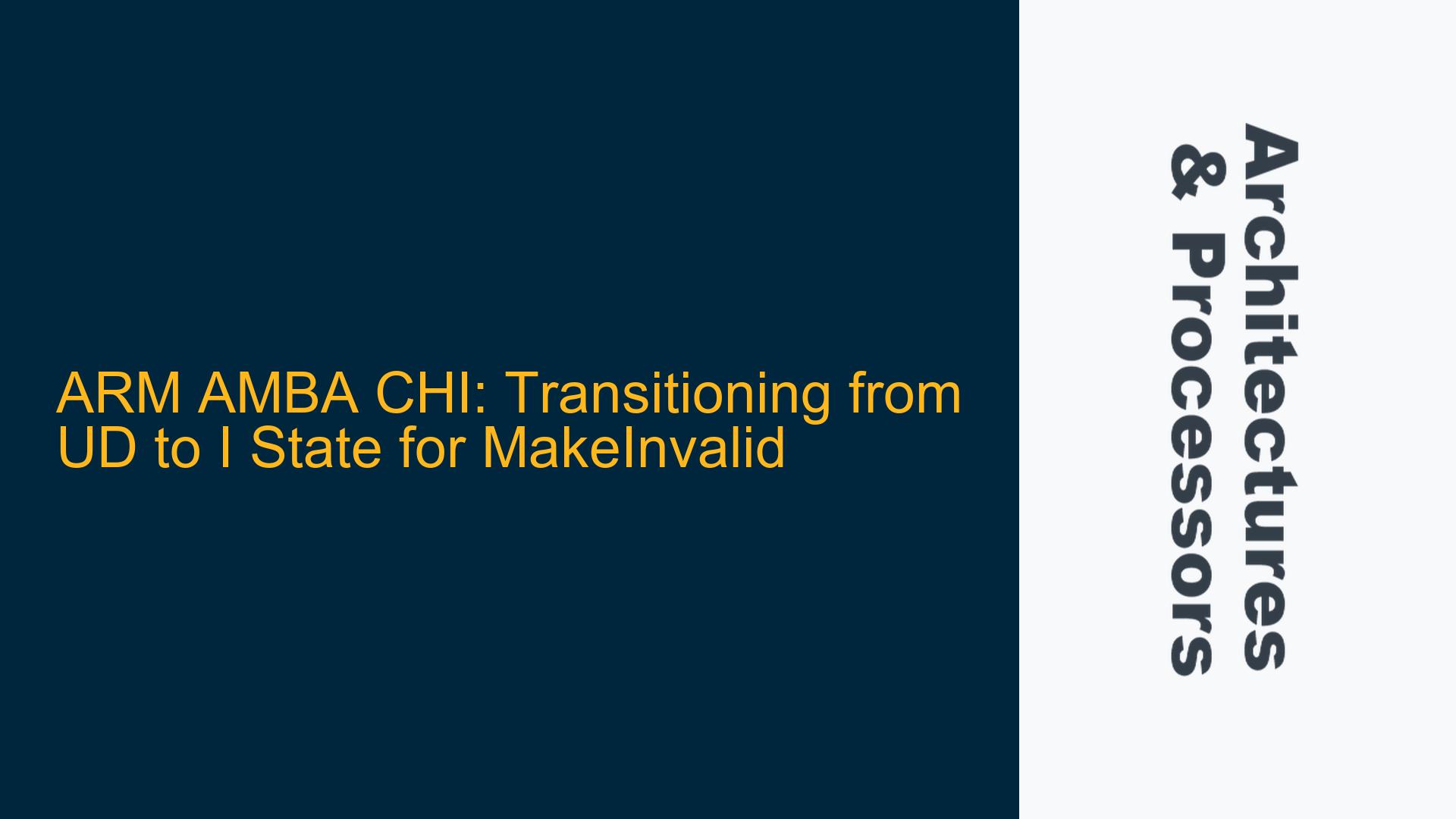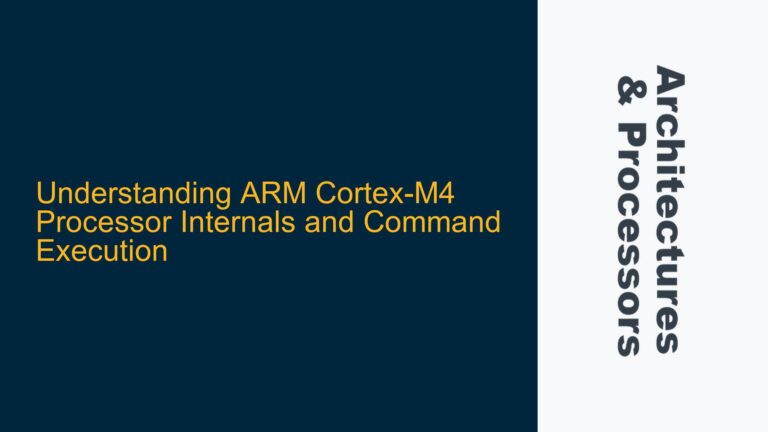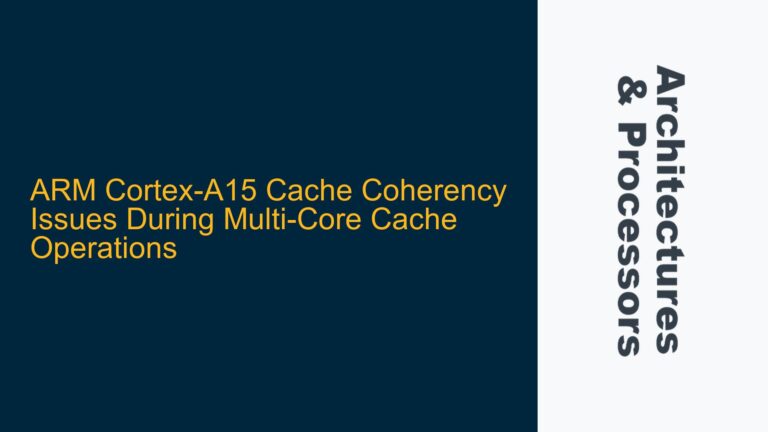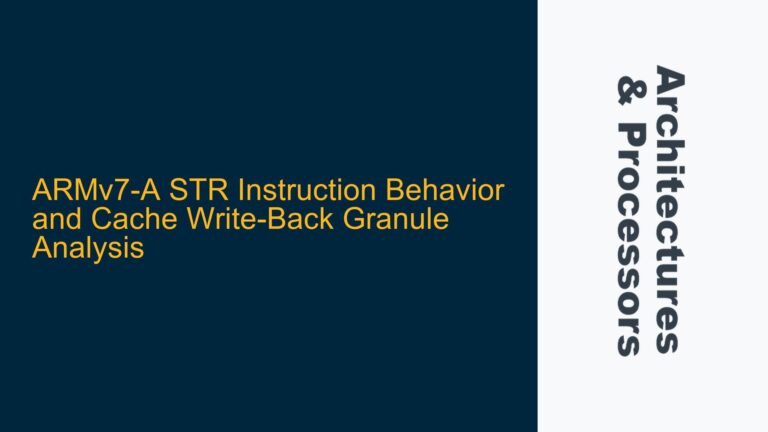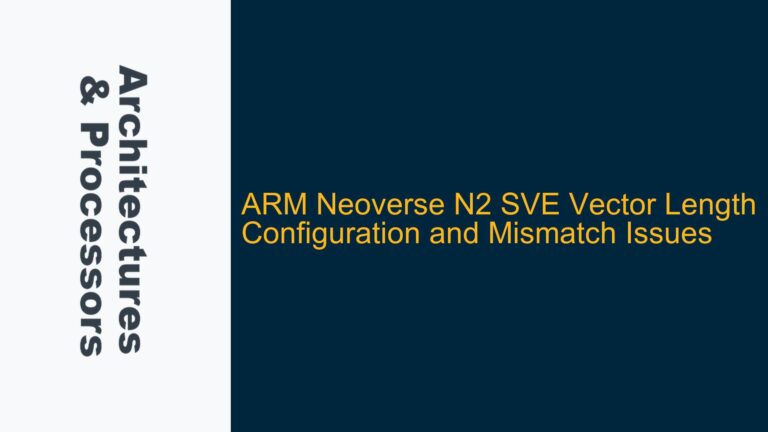Understanding the UD State and MakeInvalid Transaction Requirements
The ARM AMBA Coherent Hub Interface (CHI) specification defines a set of cache states and transactions that ensure coherency across multiple request nodes (RNs) in a system. One such state is the UD (Unique Dirty) state, which indicates that the cache line is held exclusively by the RN and has been modified, making it unique and dirty. The MakeInvalid transaction is a coherency operation used to invalidate a cache line in other RNs, ensuring that no stale data is present in the system.
According to the AMBA CHI specification (version 5, section 4.7.2, Table 4-39), a MakeInvalid transaction can only be issued from the I (Invalid) state. However, there is an exception: before issuing a CleanInvalid, MakeInvalid, or Evict transaction, the cache line is permitted to be in the UC (Unique Clean), UCE (Unique Clean Exclusive), or SC (Shared Clean) states. The specification mandates that the cache line must transition to the I state before the MakeInvalid transaction is issued.
The core issue revolves around whether a cache line in the UD state can directly transition to the I state before issuing a MakeInvalid transaction, or if it must first transition to an intermediate state such as UC, SC, or I before proceeding with the MakeInvalid operation. This question is critical for ensuring compliance with the AMBA CHI protocol and avoiding coherency violations in multi-core systems.
Potential Misalignment Between UD State and MakeInvalid Protocol
The ambiguity arises from the interaction between the UD state and the MakeInvalid transaction requirements. The UD state represents a cache line that is both unique and dirty, meaning it is the only valid copy of the data in the system and has been modified. The MakeInvalid transaction, on the other hand, is designed to invalidate cache lines in other RNs, ensuring that no stale data persists.
One possible cause of confusion is the lack of explicit mention of the UD state in the context of MakeInvalid transactions in the AMBA CHI specification. While the specification clearly states that the cache line must be in the I state before issuing a MakeInvalid transaction, it does not explicitly address whether a direct transition from UD to I is permissible. This omission can lead to differing interpretations and potential implementation errors.
Another potential cause is the assumption that the UD state is functionally equivalent to the UC or UCE states in the context of MakeInvalid transactions. While both UD and UC/UCE represent unique cache lines, the UD state additionally indicates that the data has been modified. This distinction may necessitate additional steps, such as writing back the dirty data to memory, before transitioning to the I state.
Furthermore, the timing and sequence of state transitions can impact system performance and correctness. If a cache line in the UD state is forced to transition through intermediate states before reaching the I state, it may introduce unnecessary latency or complexity. Conversely, allowing a direct transition from UD to I could simplify the protocol but may risk violating coherency rules if not handled correctly.
Resolving UD to I State Transitions for MakeInvalid Transactions
To address the issue of transitioning from the UD state to the I state for MakeInvalid transactions, the following steps and solutions are recommended:
Step 1: Clarify the AMBA CHI Specification
The first step is to thoroughly review the AMBA CHI specification, particularly section 4.7.2 and Table 4-39, to understand the intended behavior. While the specification does not explicitly mention the UD state in the context of MakeInvalid transactions, it provides guidelines for handling similar states such as UC and UCE. By extrapolating these guidelines, it can be inferred that the UD state should follow a similar protocol.
Step 2: Implement a Write-Back Mechanism
Before transitioning from the UD state to the I state, it is essential to ensure that any dirty data in the cache line is written back to memory. This can be achieved by issuing a WriteBack transaction, which updates the main memory with the modified data and transitions the cache line to the UC state. Once the cache line is in the UC state, it can then transition to the I state as required by the specification.
Step 3: Enforce State Transition Rules
To maintain coherency, the system must enforce strict rules for state transitions. When a MakeInvalid transaction is required, the cache line must first transition to the I state. If the cache line is in the UD state, the system should automatically initiate a WriteBack transaction to transition to the UC state, followed by a transition to the I state. This ensures compliance with the AMBA CHI protocol and prevents coherency violations.
Step 4: Optimize Performance
While enforcing state transition rules is critical for correctness, it is also important to optimize performance. One approach is to batch multiple MakeInvalid transactions together, reducing the overhead associated with individual state transitions. Additionally, the system can prioritize WriteBack transactions for cache lines in the UD state, ensuring that they are processed efficiently and do not become bottlenecks.
Step 5: Validate the Implementation
Finally, the implementation should be rigorously validated to ensure that it adheres to the AMBA CHI specification and performs as expected. This can be achieved through simulation, formal verification, and testing on actual hardware. Special attention should be paid to edge cases, such as concurrent access to the same cache line by multiple RNs, to ensure that the system remains coherent under all conditions.
By following these steps, the issue of transitioning from the UD state to the I state for MakeInvalid transactions can be resolved effectively. The key is to balance compliance with the AMBA CHI specification, system performance, and implementation complexity, ensuring a robust and efficient solution.
